Nationality American Start date March 1, 1932 | Known for Kidnap victim | |
 | ||
Cause of death blow to the head (crushed skull) Body discovered May 12, 1932, in Hopewell, New Jersey, U.S. Resting place ashes scattered in the Atlantic Ocean Adaptations Crime of the Century (1996) | ||
The lindbergh kidnapping
On the evening of March 1, 1932 Charles Augustus Lindbergh Jr., the eldest son of aviator Charles Lindbergh and Anne Morrow Lindbergh, was abducted from the family home in Highfields, New Jersey. On May 12 the body of the 20-month-old boy, killed by a massive skull fracture, was discovered nearby.
Contents
- The lindbergh kidnapping
- Lindbergh baby case aka the lindbergh kidnapping reel 2 1935
- Kidnapping
- The investigation
- The news spreads
- John Condon
- Ransom payment
- Discovery of the body
- John Condons unofficial investigation
- Tracking the ransom money
- Arrest of Hauptmann
- Trial
- Controversy
- Review of the evidence
- In music
- In novels
- In languages
- In film and television
- In theatre
- References

In September 1934 Richard Hauptmann was arrested and, in a trial lasting from January 2 to February 13, 1935, found guilty of first degree murder and sentenced to death. He was executed by electric chair at the New Jersey State Prison on April 3, 1936, protesting his innocence to the end.
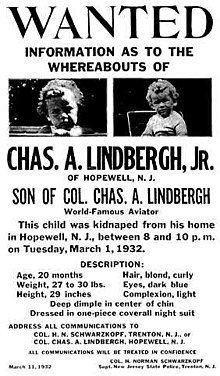
Newspaper writer H. L. Mencken called the kidnapping and trial "the biggest story since the Resurrection." Legal scholars have referred to the trial as one of the "trials of the century". The crime spurred Congress to pass the Federal Kidnapping Act, commonly called the "Lindbergh Law," which made transporting a kidnapping victim across state lines a federal crime.
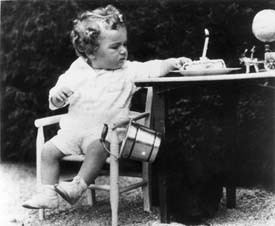
Lindbergh baby case aka the lindbergh kidnapping reel 2 1935
Kidnapping
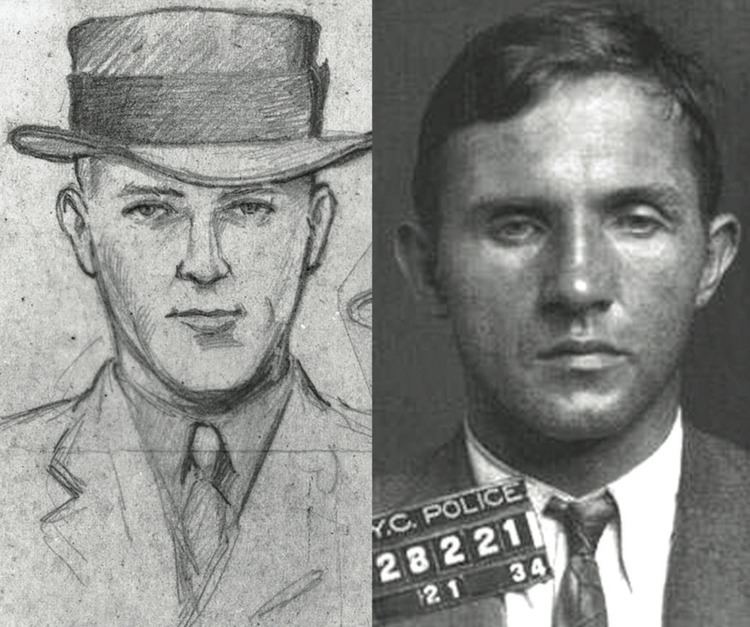
At 7:30 p.m. on March 1, 1932, family nurse Betty Gow put 20-month-old Charles Lindbergh Jr. in his crib. Around 9:30 pm Charles Lindbergh, who was in the library just below the baby's room, heard a noise which he imagined to be slats breaking off a full crate in the kitchen. At 10:00 pm Gow discovered the crib empty. Finding the baby was not with his mother Anne Lindbergh, who had just left a bath, Gow alerted Charles Lindbergh, who went immediately to the child's room, where he found a note in an envelope on the windowsill, then took a gun and went around the house looking for intruders.

Within twenty minutes police were enroute to the home, along with reporters and the family lawyer. Later that night a tire print was discovered in the mud and, in a bush, three pieces of a ladder that appeared intelligently designed but crudely constructed.
The investigation
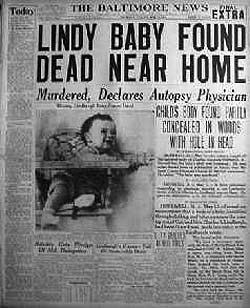
Hopewell Borough police and New Jersey State Police officers searched the home and its surrounding area for miles. After midnight, a fingerprint expert examined the ransom note and ladder, no usable fingerprints or footprints were found leading experts to conclude that the kidnapper(s) wore gloves on their hands and some type of cloth on the soles of their shoes. No adult fingerprints were found in the baby's room, including in areas witnesses admitted to touching, such as the window, but the baby's fingerprints were found.
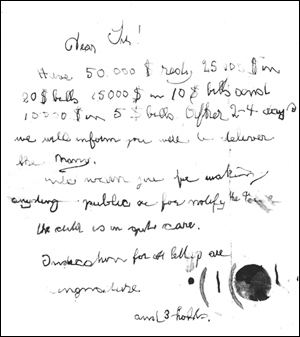
The brief, handwritten ransom note was riddled with spelling mistakes and grammatical irregularities; at bottom of the note were two interconnected blue circles surrounding a red circle, with a hole punched through the red circle and two more holes to the left and right.
The news spreads
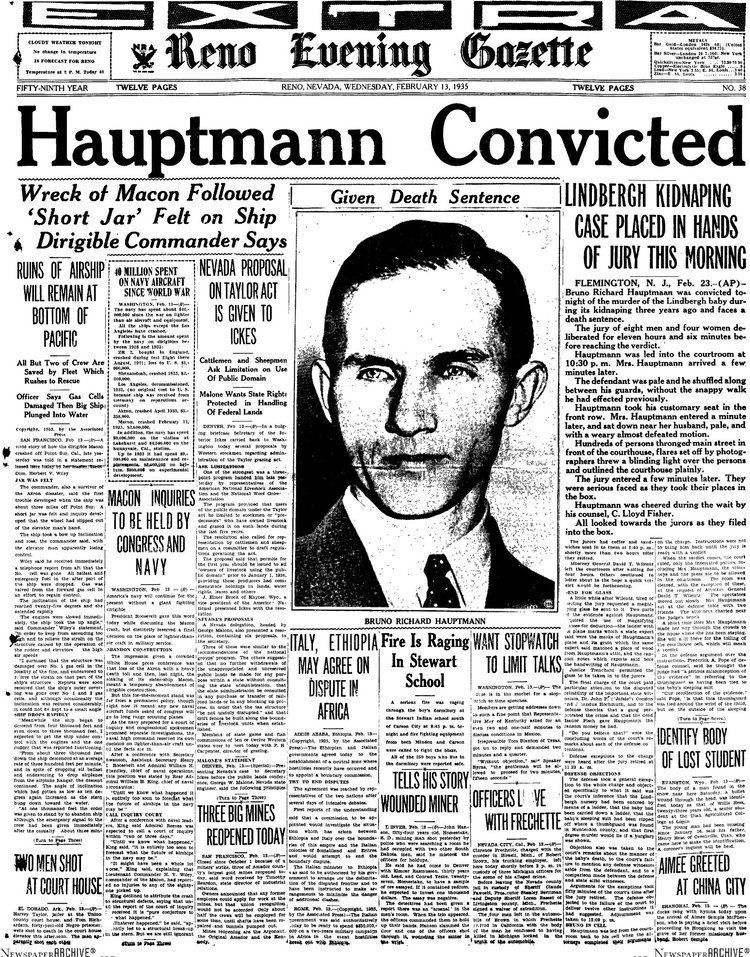
Word of the kidnapping spread quickly, and, along with police, the well-connected and well-intentioned arrived at the Lindbergh estate. There were military colonels offering their aid, though only one had law enforcement expertise: Herbert Norman Schwarzkopf, superintendent of the New Jersey State Police. The other colonels were Henry Skillman Breckinridge, a Wall Street lawyer; William J. Donovan (a.k.a. "Wild Bill" Donovan, a hero of the First World War who would later head the OSS). Lindbergh and these men believed that the kidnapping was perpetrated by organized crime figures. The letter, they thought, seemed written by someone who spoke German as his native language. Charles Lindbergh, at this time, used his influence to control the direction of the investigation.
They contacted Mickey Rosner, a Broadway hanger-on rumored to know mobsters. Rosner, in turn, brought in two speakeasy owners: Salvatore "Salvy" Spitale and Irving Bitz. Lindbergh quickly endorsed the duo and appointed them his intermediaries to deal with the mob. Several organized crime figures – notably Al Capone, Willie Moretti, Joe Adonis and Longy Zwillman — spoke from prison, offering to help return the baby in exchange for money or for legal favors. Specifically, Capone offered assistance in return for being released from prison under the pretense that his assistance would be more effective. This was quickly denied by the authorities.
The morning after the kidnapping, U.S. President Herbert Hoover was notified of the crime. Though the case did not seem to have any grounds for federal involvement (kidnapping was then classified as a local crime), after meeting with President Hoover, Attorney General William D. Mitchell announced that the whole machinery of the Department of Justice would be set in motion to cooperate with the New Jersey authorities.
The Bureau of Investigation (not yet called the FBI) was authorized to investigate the case, while the United States Coast Guard, the U.S. Customs Service, the U.S. Immigration Service and the Washington, D.C., police were told their services might be required. New Jersey officials announced a $25,000 reward for the safe return of "Little Lindy." The Lindbergh family offered an additional $50,000 reward of their own. The total reward of $75,000 was made even more significant by the fact that the offer was made during the early days of the Great Depression.
During this time, Lindbergh flew to Round Hill Airport to investigate a lead suggesting that his son was on a boat off the Elizabeth Islands.
On March 6, a new ransom letter arrived by mail at the Lindbergh home. Postmarked March 4 in Brooklyn, the letter carried the perforated red and blue marks. The ransom had been raised to $70,000. A third ransom note postmarked from Brooklyn, and also including the secret marks, arrived in Breckenridge's mail. The note told the Lindberghs that Condon should be the intermediary between the Lindberghs and the kidnapper(s), and requested notification via newspaper that the third note had been received. Instructions specified the size of the box the money should come in, and warned the family not to contact the police.
John Condon
During this time, John F. Condon, a well-known Bronx personality and retired school teacher, wrote a letter to the Bronx Home News, offering $1,000 if the kidnapper would turn the child over to a Catholic priest. Condon received a letter reportedly written by the kidnappers. It authorized Condon to be their intermediary with Lindbergh. Lindbergh accepted the letter as genuine.
Following the latest letter's instructions, Condon placed a classified ad in the New York American reading: "Money is Ready. Jafsie". Condon then waited for further instructions from the culprits.
A meeting between "Jafsie" and a representative of the group that claimed to be the kidnappers was eventually scheduled for late one evening at Woodlawn Cemetery in the Bronx. According to Condon, the man sounded foreign but stayed in the shadows during the conversation, and he was thus unable to get a close look at his face. The man said his name was John, and he related his story: he was a "Scandinavian" sailor, part of a gang of three men and two women. The baby was being held on a boat, unharmed, but would be returned only for ransom. When Condon expressed doubt that "john" actually had the baby, he promised some proof: the kidnapper would soon return the baby's sleeping suit. The stranger asked Condon, "... would I 'burn' [be executed], if the package [i.e. the baby] were dead?" When questioned further, he assured Condon that the baby was alive.
On March 16, Condon received a toddler's sleeping suit by mail, and a seventh ransom note. After Lindbergh identified the sleeping suit, Condon placed a new ad in the Home News: "Money is ready. No cops. No secret service. I come alone, like last time." On April 1 Condon received a letter saying it was time for the ransom to be delivered.
Ransom payment
The ransom was packaged in a wooden box that was custom-made in the hope that it could later be identified. The ransom money included a number of gold certificates – gold certificates were about to be withdrawn from circulation, and it was hoped this would draw attention to anyone spending them. The bills were not marked but their serial numbers were recorded. Some sources credit this idea to Frank J. Wilson, others to Elmer Lincoln Irey.
On April 2, Condon was given a note by an unknown cab driver. Condon met "John" and told him that they had been able to raise only $50,000. The man accepted the money and gave Condon a note saying that the child was in the care of two innocent women.
Discovery of the body
On May 12, a delivery truck driver pulled to the side of a road about 4.5 miles (7.2 km) south of the Lindbergh home near the hamlet of Mount Rose in neighboring Hopewell Township. Going into a grove of trees to relieve himself he discovered the body of a toddler. Allen notified the police, who took the body to a morgue in nearby Trenton, New Jersey. The skull was badly fractured and the body badly decomposed, having been chewed on by animals; there were indications of an attempt at a hasty burial. Gow identified the baby as the missing infant from the overlapping toes of the right foot and a shirt that she had made. It appeared the child had been killed by a blow to the head. Lindbergh insisted on cremation.
In June 1932, officials began to suspect an "inside job" perpetrated by someone the Lindberghs trusted. Suspicions fell upon Violet Sharp, a British household servant at the Morrow home. She had given contradictory testimony regarding her whereabouts on the night of the kidnapping. It was reported that she appeared nervous and suspicious when questioned. She committed suicide on June 10, 1932, by ingesting a silver polish that contained potassium cyanide just prior to what would have been her fourth time being questioned. After her alibi was confirmed, it was later determined that the possible threat of losing her job and the intense questioning had driven her to commit suicide. At the time, the police investigators were criticized for what some felt were the "heavy handed" police tactics used.
Following the death of Violet Sharp, John Condon was also questioned by police. Condon's home was searched as well, but nothing was found that tied Condon to the crime. Charles Lindbergh stood by Condon during this time as well.
John Condon's unofficial investigation
After the discovery of the body, Condon remained unofficially involved in the case. To the public, he had become a suspect and in some circles vilified. For the next two years, he visited police departments and pledged to find "Cemetery John".
Condon's actions regarding the case were increasingly flamboyant. On one occasion, while riding a city bus, he saw a suspect and, announcing his secret identity, ordered the bus to a stop. The startled driver complied, and Condon darted from the bus, though Condon's target eluded him. Condon's actions were also criticized as exploitative when he agreed to appear in a vaudeville act regarding the kidnapping. Liberty magazine published a serialized account of Condon's involvement in the Lindbergh kidnapping under the title "Jafsie Tells All".
Tracking the ransom money
Investigation of the case was soon in the doldrums. There were no developments and little evidence of any sort, so police turned their attention to tracking the ransom payments. A pamphlet was prepared with the serial numbers on the ransom bills, and 250,000 copies were distributed to businesses mainly in New York City. A few of the ransom bills turned up in scattered locations, some as far away as Chicago and Minneapolis, but the people spending them were never found.
Per a presidential order, all gold certificates were to be exchanged for other bills by May 1, 1933. A few days before the deadline, a man brought $2,980 to Manhattan bank for exchange; it was later realized the bills were from the ransom. He had given his name as J. J. Faulkner of 537 West 149th Street. No one named Faulkner lived at at that address, and a Jane Faulkner who had lived there twenty years earlier, when tracked down, denied involvement.
Arrest of Hauptmann
Over a period of thirty months a number of the ransom bills were spent throughout New York City; detectives realized that many of the bills were spent along the route of the Lexington Avenue subway, which connected the East Bronx with the east side of Manhattan, including the German-Austrian neighborhood of Yorkville.
On September 18, 1934 a Manhattan bank teller noticed a gold certificate from the ransom; a New York license plate number (4U-13-41-N.Y) penciled in the bill's margin allowed it to be traced to a nearby gas station. The station manager had written down the license number because his customer was acting "suspicious" and was "possibly a counterfeiter". The license plate belonged to a sedan owned by Richard Hauptmann of 1279 East 222nd Street in the Bronx, an immigrant with a criminal record in Germany. When Hauptmann was arrested, he was carrying a twenty-dollar gold certificate; over $14,000 of the ransom money was found in his garage.
Hauptmann was arrested and interrogated—and beaten at least once—throughout the following day and night. The money, Hauptmann stated, along with other items, had been left with him by friend and former business partner Isidor Fisch. Fisch had died on March 29, 1934, shortly after returning to Germany. Only following Fisch's death, Hauptmann stated, did he learn that the shoe box left with him contained a considerable sum of money. He took the money because he claimed that it was owed to him from a business deal that he and Fisch had made. Hauptmann consistently denied any connection to the crime or knowledge that the money in his house was from the ransom.
In the search of his apartment by police, a considerable amount of additional evidence that he was involved in the crime surfaced. One item was a notebook that contained a sketch for the construction of a ladder similar to that which was found at the Lindbergh home in March 1932. John Condon's telephone number, along with his address, were discovered written down on a closet wall in the house. A key piece of evidence, a section of wood, was discovered in the attic of the home. After being examined by an expert, it was determined to be an exact match to the wood used in the construction of the ladder found at the scene of the crime.
Hauptmann was indicted in the Bronx on September 24, 1934, for extorting the $50,000 ransom from Charles Lindbergh. Two weeks later, on October 8, 1934, Hauptmann was indicted in New Jersey for the murder of Charles Augustus Lindbergh Jr. Two days later, he was surrendered to New Jersey authorities by New York Governor Herbert H. Lehman to face charges directly related to the kidnapping and murder of the child. Hauptmann was moved to the Hunterdon County Jail in Flemington, New Jersey, on October 19, 1934.
Trial
Hauptmann was charged with capital murder, meaning that conviction could result in the death penalty. Held at the Hunterdon County Courthouse in Flemington, New Jersey, the trial soon dubbed the "Trial of the Century": reporters swarmed the town, and every hotel room was booked. The presiding judge was Thomas Whitaker Trenchard.
In exchange for rights to publish Hauptmann's story in their newspaper, Edward J. Reilly was hired by the Daily Mirror to serve as Hauptmann's attorney. David T. Wilentz, Attorney General of New Jersey, led the prosecution.
Evidence against Hauptmann included $20,000 of the ransom money found in his garage and testimony alleging handwriting and spelling similarities to that found on the ransom notes. Eight handwriting experts (including Albert S. Osborn) pointed out similarities between the ransom notes and Hauptmann's writing specimens. The defense called an expert to rebut this evidence, while two others declined to testify; the latter two demanded $500 before looking at the notes and were dismissed when Fisher declined. Others experts retained by the defense were never called to testify.
Based on the work of Arthur Koehler at the Forest Products Laboratory, the State introduced photographs demonstrating that part of the wood from the ladder matched a plank from the floor of Hauptmann's attic: the type of wood, the direction of tree growth, the milling pattern, the inside and outside surface of the wood, and the grain on both sides were identical, and four oddly placed nail holes lined up with nail holes in joists in Hauptmann's attic. Additionally, Condon's address and telephone number were written in pencil on a closet door in Hauptmann's home. Hauptmann admitted to police that he had written Condon's address: "I must have read it in the paper about the story. I was a little bit interested and keep a little bit record of it, and maybe I was just on the closet, and was reading the paper and put it down the address." But he said, "I can't give you any explanation about the telephone number."
Additionally, a hand-drawn sketch which Wilentz suggested was that of a ladder was found in one of Hauptmann's notebooks (S-261). Hauptmann said this picture, along with various other sketches contained therein, had been the work of a child who had drawn in it.
Despite not having an obvious source of employment income, he had enough money to purchase a large $400 radio (nearly $7,000 today) and to send his wife on a trip to Germany (the purpose of the trip being to see whether Hauptmann would be arrested for having committed earlier crimes there).
Hauptmann was positively identified as the man to whom the ransom money was delivered. Other witnesses testified that it was Hauptmann who had spent some of the Lindbergh gold certificates, that he had been seen in the area of the estate in East Amwell, New Jersey near Hopewell on the day of the kidnapping, and that he had been absent from work on the day of the ransom payment and quit his job two days later.
When the prosecution rested, the defense opened up their case with a lengthy examination by Hauptmann himself. In his testimony, Hauptmann denied being guilty, insisting that the box found to contain the gold certificates had been left in his garage by a friend named Isidor Fisch, who had returned to Germany in December 1933 and died there in March 1934. Hauptmann claimed that he had one day found a shoe box left behind by Fisch, which Hauptmann had stored on the top shelf of a kitchen broom closet, later discovering the money which, upon counting, added up to nearly $40,000. He further claimed that since Fisch owed him around $7,500 in business funds, Hauptmann claimed the money for himself in which he lived off of since January 1934. A ledger was found in Hauptmann's home containing of all his financial transactions; yet, no record of the alleged $7,500 debt was listed.
Hauptmann's defense lawyer, Edward J. Reilly, called Hauptmann's wife Anna as the next witness to corroborate the Fisch story. But upon cross-examination by chief prosecutor David T. Wilentz, she was forced to admit that while she hung her apron every day on a hook higher than the top shelf, she could not remember seeing any shoe box there. Later, rebuttal witnesses testified that Fisch could not have been at the scene of the crime, and that he had no money for medical treatments when he died in Germany of tuberculosis. Fisch's landlady testified that he could barely afford his $3.50-a-week room. Various witnesses called by Reilly to put Fisch near the Lindbergh house on the night of the kidnapping were discredited in cross-examination with incidents from their pasts, which included criminal records or mental instability.
In his closing summation Reilly argued that the evidence against Hauptmann was entirely circumstantial, as no reliable witness had placed Hauptmann at the scene of the crime, nor were his fingerprints found on the ladder, the ransom notes, or anywhere in the nursery.
Hauptmann was convicted and immediately sentenced to death. Hauptmann's attorneys appealed to the New Jersey Court of Errors and Appeals, then the state's highest court; the appeal was argued on June 29, 1935.
New Jersey Governor Harold G. Hoffman secretly visited Hauptmann in his cell on the evening of October 16, accompanied by a stenographer who spoke German fluently. Hoffman urged members of the Court of Errors and Appeals to visit Hauptmann.
In late January 1936, while declaring he held no position on the guilt or innocence of Hauptmann, Hoffman cited evidence that the crime was not a "one person" job and directed Norman Schwarzkopf, Sr to continue a thorough and impartial investigation in an effort to bring all parties involved to justice.
As time was quickly running out for Hauptmann, it became known among the press that on March 27, Governor Hoffman was considering a second reprieve of his death sentence, but was actively seeking advice concerning the legality of his right as governor to do so.
On March 30, 1936, Hauptmann's second and final appeal asking for clemency from the New Jersey Board of Pardons was denied. Hoffman later announced that this decision would be the final legal action in the case, and that he would not grant another reprieve. Nonetheless there was a postponement when the Mercer County grand jury, investigating the confession and arrest of Paul Wendel, requested a delay from Warden Mark Kimberling. This final stay ended when the Mercer County Prosecutor informed Kimberling the Grand Jury had adjourned after voting to discontinue its investigation without charging Wendel.
Hauptmann turned down a large offer from a Hearst newspaper for a confession and refused a last-minute offer to commute his execution to a life sentence in exchange for a confession. He was electrocuted on April 3, 1936, just over four years after the kidnapping.
Following Hauptmann's death, some reporters and independent investigators came up with numerous questions regarding the way the investigation was run and the fairness of the trial. Questions were raised concerning issues ranging from witness tampering to the planting of evidence. Twice during the 1980s, Anna Hauptmann sued the state of New Jersey for the unjust execution of her husband. Both times the suits were dismissed on unknown grounds. She continued fighting to clear his name until her death in 1994.
Controversy
Like other notorious crimes, the Lindbergh kidnapping has attracted hoaxes and alternative theories.
Review of the evidence
According to one source a fingerprint expert applied the then-rare silver nitrate fingerprint process to the ladder, and did not find Hauptmann's fingerprints, even in places that the maker of the ladder must have touched. According to this source, officials refused to consider this expert's findings, and the ladder was then washed of all fingerprints.
A number of books have asserted Hauptmann's innocence, generally highlighting sloppy police work at the crime scene, Lindbergh's interference in the investigation, ineffectiveness of Hauptmann's counsel, and weaknesses in the witnesses and physical evidence. Ludovic Kennedy, in particular, questioned much of the evidence, such as the origin of the ladder and the testimony of many of the witnesses. A recent book, A Talent to Deceive by British investigative writer William Norris, claims without proof that Anne's Morrow's brother Dwight Morrow Jr. was the kidnapper, and that Lindbergh protected him.
Jim Fisher, a former FBI agent and professor at Edinboro University of Pennsylvania, has written two books, The Lindbergh Case (1987) and The Ghosts of Hopewell (1999) addressing what he calls a "revision movement" regarding the case. He summarizes: "Today, the Lindbergh phenomena [sic] is a giant hoax perpetrated by people who are taking advantage of an uninformed and cynical public. Notwithstanding all of the books, TV programs, and legal suits, Hauptmann is as guilty today as he was in 1932 when he kidnapped and killed the son of Mr. and Mrs. Charles Lindbergh."
A more recent book, Hauptmann's Ladder: A Step-by-Step Analysis of the Lindbergh Kidnapping, by Richard T. Cahill Jr., concludes that Hauptmann was guilty but questions whether he should have been executed. Though Cahill concludes that Hauptmann likely acted alone, he acknowledges the possibility of an accomplice.
According to John Reisinger in Master Detective (Citadel Press, 2006), famed New Jersey detective Ellis Parker conducted an independent investigation in 1936 and obtained a signed confession from former Trenton attorney Paul Wendel, creating a sensation and resulting in a temporary stay of execution for Hauptmann. The case against Wendel collapsed, however, when he insisted his confession had been coerced.
Several people have suggested that Charles Lindbergh himself was responsible for the kidnapping. In 2010, Jim Bahm's Beneath the Winter Sycamores implied that the baby was physically disabled and Lindbergh arranged the kidnapping as a way of secretly moving the baby to Germany to be raised.
Robert Zorn's 2012 Cemetery John proposes that Hauptmann was part of a conspiracy with two other German-born men, John and Walter Knoll. Zorn's father, economist Eugene Zorn, believed that as a teenager he had witnessed the conspiracy being discussed.
